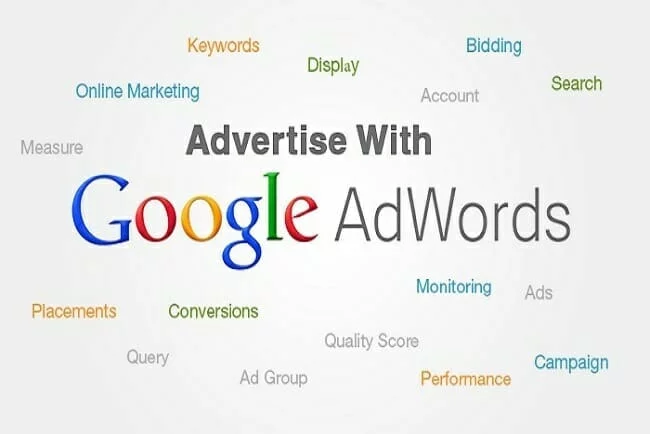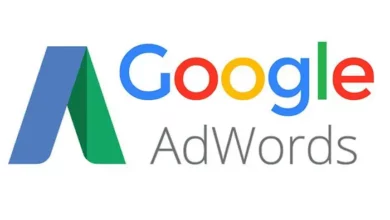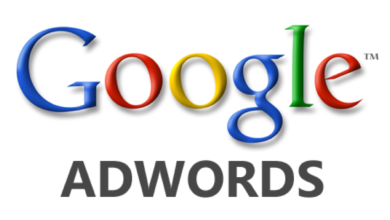Dominate Digital Advertising: The Ultimate Guide to Google Ads Success!

In today’s fast-paced digital landscape, mastering Google Ads is essential for businesses looking to thrive online.
With its extensive reach and powerful targeting options, Google Ads can propel your brand to new heights.
In this comprehensive guide, we’ll delve into the intricacies of Google Ads and provide you with actionable strategies to ensure your campaigns not only perform well but outshine the competition.
1. Understanding Google Ads: Unraveling the Basics
Before we embark on the journey of mastering Google Ads, it’s imperative to establish a solid foundation.
Google Ads, at its core, is a pay-per-click advertising platform that provides businesses with a powerful tool to promote their products or services. This platform operates on a bidding system, where advertisers compete for ad placement based on keywords relevant to their target audience.
When a user conducts a search on Google using those keywords, the system determines which ads to display based on a combination of bid amount and ad quality.
This intricate auction system ensures that users are presented with the most relevant and high-quality ads in response to their search queries.
The Google Ads platform offers a diverse range of ad formats, including text-based ads, display ads, video ads, and app promotion ads.
These various formats cater to different types of businesses and their unique advertising goals. For instance, text-based ads are concise and effective for driving website visits or conversions, while display ads are visually engaging and can be particularly impactful for brand awareness campaigns.
Video ads, on the other hand, provide an immersive storytelling experience, making them ideal for capturing audience attention on platforms like YouTube.
Understanding the intricacies of Google Ads also involves grasping the concept of Quality Score.
This metric, determined by the relevance and quality of your keywords, ad copy, and landing page, plays a pivotal role in ad placement and cost-per-click (CPC). A high Quality Score not only improves ad positioning but also reduces the cost of your clicks, allowing for more efficient ad spend.
The Google Ads platform operates across several networks, each offering distinct opportunities for reaching your target audience.
The Google Search Network allows businesses to display their ads directly in Google search results, ensuring maximum visibility when users search for relevant keywords.
On the other hand, the Display Network enables advertisers to showcase visual ads on a vast network of partner websites, allowing for broader brand exposure.
YouTube, as a subsidiary of Google, provides an unparalleled platform for video advertising. With billions of monthly active users, YouTube offers a colossal audience base for businesses to tap into.
Through engaging video content, advertisers can captivate viewers and drive brand recognition and conversions.
In summary, Google Ads serves as a dynamic and multifaceted platform for businesses to connect with their target audience.
By understanding the fundamental principles of how Google Ads operates, including the auction-based bidding system, diverse ad formats, Quality Score, and the various networks available, advertisers can lay the groundwork for successful and impactful advertising campaigns.
This foundational knowledge sets the stage for the advanced strategies and techniques that will be explored in the subsequent sections of this guide.
Crafting Compelling Ad Copy: The Key to Click-Through Success
In the realm of Google Ads, crafting compelling ad copy is nothing short of an art form.
It stands as the linchpin of any successful advertising campaign, serving as the initial point of contact between a brand and potential customers.
Effective ad copy has the power to captivate the audience’s attention, ignite curiosity, and ultimately drive them to take action.
One of the most critical aspects of creating compelling ad copy is the use of bold statements and engaging language.
These elements work in tandem to make your ad stand out amidst the sea of search results.
By employing language that resonates with the target audience and sparks their interest, you’re more likely to capture their attention and pique their curiosity.
Additionally, it’s imperative to highlight the unique selling points (USPs) of your product or service.
What sets your offering apart from the competition? Whether it’s exceptional quality, unbeatable prices, or unrivaled customer service, these distinguishing features should take center stage in your ad copy.
By effectively communicating your USPs, you’re providing potential customers with a compelling reason to choose your brand over others.
Equally important is the inclusion of a clear and persuasive call to action (CTA).
This directive guides users on what step to take next. Whether it’s “Shop Now,” “Learn More,” or “Sign Up Today,” a well-crafted CTA prompts users to move forward in their customer journey.
It provides a sense of direction and purpose, ultimately leading to higher click-through rates and conversions.
Furthermore, it’s crucial to align your ad copy with the user’s search intent.
Understanding the context behind their search query allows you to tailor your messaging to directly address their needs and interests.
When users perceive that your ad directly relates to their query, they’re more likely to click through and explore further.
In summary, crafting compelling ad copy is an indispensable component of a successful Google Ads campaign.
It serves as the gateway to capturing the attention of potential customers and influencing their decision-making process.
Through the use of bold language, highlighting unique selling points, incorporating clear CTAs, and aligning with user intent, advertisers can create ad copy that not only entices clicks but also drives meaningful interactions with their brand.
2. The Power of Keywords: Unleashing Their Potential
In the realm of Google Ads, the power of keywords cannot be overstated.
They serve as the fundamental building blocks upon which successful campaigns are constructed.
Thorough keyword research is the cornerstone of any effective advertising strategy.
It involves identifying and selecting specific terms and phrases that potential customers are likely to use when searching for products or services.
To begin, it’s essential to conduct comprehensive keyword research.
This process involves identifying high-performing keywords that are not only relevant to your business but also have a high search volume. These are the terms that potential customers are actively using in their search queries.
By targeting these keywords, you’re positioning your ads to be displayed to a highly relevant and potentially interested audience.
In addition to broad, high-traffic keywords, it’s crucial to consider the potential of long-tail keywords.
These are longer, more specific phrases that may have lower search volumes compared to broader terms.
However, they often indicate a more refined search intent.
While long-tail keywords may be less competitive, they can yield highly targeted traffic. For example, a user searching for “best running shoes for trail running” is likely further along in their purchasing journey compared to someone searching for “running shoes.”
Once you’ve identified your target keywords, it’s essential to seamlessly integrate them into your ad copy and landing pages.
This ensures maximum relevance between the user’s search query, the ad they see, and the page they land on. By maintaining this alignment, you increase the likelihood of capturing their interest and guiding them towards a conversion.
Ultimately, understanding and harnessing the potential of keywords is central to the success of your Google Ads campaigns.
Through meticulous research, thoughtful selection, and strategic integration, you have the power to reach and engage your target audience effectively.
Keywords serve as the bridge that connects potential customers with the products or services they seek, making them a critical element in any high-performing advertising strategy.
3. Quality Score: Elevating Your Ad Position
In the intricate ecosystem of Google Ads, Quality Score reigns supreme.
It’s a metric bestowed upon each ad, determined by a blend of crucial factors including ad relevance, click-through rate, and the user’s experience upon landing on your page.
A higher Quality Score is akin to a golden ticket in the world of digital advertising, offering the promise of superior ad positions and more economical costs per click.
To elaborate, ad relevance is a pivotal component of Quality Score. It signifies how closely your ad aligns with the keywords you’re targeting.
Crafting ads that are directly pertinent to the user’s search query is imperative.
This ensures that the ad resonates with the user, increasing the likelihood of them clicking through.
The click-through rate (CTR) also wields considerable influence.
It’s a measure of how often users click on your ad after viewing it. A high CTR indicates that your ad is compelling and relevant to the audience. It’s a strong signal to Google that your ad is providing value to users, which is rewarded with a better Quality Score.
Landing page experience completes the triad of Quality Score determinants.
It assesses the page that users are directed to after clicking on your ad.
A seamless, user-friendly landing page that provides the information or product promised in the ad not only boosts user satisfaction but also augments the Quality Score.
Why does Quality Score matter? Because it directly impacts your ad’s position on the search results page.
A higher Quality Score often translates to a higher ad position, potentially catapulting your ad to the top of the page.
Additionally, an elevated Quality Score can lead to lower costs per click, making your advertising budget stretch further.
In conclusion, understanding and optimizing for Quality Score is essential for achieving success in your Google Ads campaigns.
By focusing on ad relevance, click-through rate, and providing a stellar landing page experience, you’re not only enhancing your Quality Score but also positioning your ads for greater visibility and efficiency.
This strategic approach ultimately contributes to a more effective and fruitful advertising campaign.
4. Ad Extensions: Maximizing Visibility and Clicks
Ad extensions are the unsung heroes of Google Ads, offering a powerful way to amplify the impact of your advertisements.
They go beyond the basic ad copy to provide potential customers with supplementary information, ultimately enhancing the visibility and relevance of your ads.
Among the arsenal of ad extensions, site link extensions stand out as invaluable tools. They allow you to append extra links to your ad, guiding users to specific pages on your website that are most relevant to their needs.
This empowers potential customers with direct access to the exact information or product they seek, streamlining their journey and increasing the likelihood of a conversion.
Callout extensions serve as bite-sized highlights of your business. They enable you to succinctly showcase unique features, offers, or benefits of your products or services.
By presenting compelling reasons why users should choose your business, callout extensions act as persuasive nudges, urging potential customers towards a click.
Structured snippet extensions add an extra layer of depth to your ad.
They allow you to categorize and display specific aspects of your products or services.
This not only provides users with a comprehensive snapshot of what you offer but also reinforces the relevance and credibility of your ad.
By incorporating these extensions, you not only bolster the relevance and persuasiveness of your ads but also enhance the overall user experience.
Potential customers are provided with more comprehensive information, enabling them to make more informed decisions.
This, in turn, leads to higher-quality clicks and potentially greater conversions.
In conclusion, ad extensions are an indispensable component of any successful Google Ads campaign.
They serve as invaluable tools to enrich your ad content, guiding potential customers towards relevant information and enticing them to take action.
By leveraging site link, callout, and structured snippet extensions, you’re not only enhancing ad relevance but also elevating the overall user experience, ultimately driving more meaningful results for your business.
5. Mastering Bid Strategies: Finding the Optimal Balance
Effective bidding strategies are crucial for achieving a positive return on investment (ROI). Experiment with different bid strategies, such as manual CPC or automated bidding, to find the approach that aligns best with your campaign goals. Regularly monitor and adjust your bids to maximize results.
6. A/B Testing: Fine-Tuning Your Campaigns
Continuous improvement is the key to sustained success in Google Ads. Conduct A/B tests to compare different ad variations, landing pages, and targeting options. Analyze the data to identify winning elements and implement them across your campaigns for improved performance.
7. Leveraging Audience Targeting: Reaching the Right People
Refine your targeting by leveraging audience demographics, interests, and behaviors. Create custom audiences based on website interactions or customer segments to deliver tailored messaging. This ensures your ads resonate with the right audience, increasing the likelihood of conversions.
8. Remarketing: Nurturing Potential Customers
Don’t miss out on potential conversions from users who have interacted with your website but haven’t converted. Implement remarketing campaigns to re-engage these leads with personalized ads. Offer incentives or highlight unique value propositions to entice them to complete the desired action.
9. Embracing Mobile Optimization: Capturing On-the-Go Audiences
With the increasing prevalence of mobile devices, it’s imperative to have mobile-optimized ads and landing pages. Ensure your website loads quickly, and the user experience is seamless on various mobile devices. This not only improves user satisfaction but also positively impacts ad performance.
Conclusion: Sustaining Google Ads Excellence
In conclusion, mastering Google Ads requires a strategic approach that encompasses ad copy optimization, keyword research, bid management, and continuous testing. By following the strategies outlined in this guide, you’ll be well-equipped to not only succeed but dominate the digital advertising landscape. Keep in mind that consistent monitoring and optimization are key to staying ahead of the competition. Implement these tactics and watch your Google Ads campaigns soar to new heights of success!



